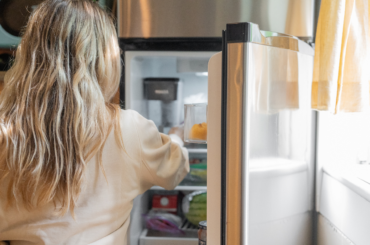A study at Rutgers University shows Black teens actually experience racial discrimination at a staggering rate of five times per day.
Whether the comments boiled down to teasing about their hair or something more profound, such as witnessing a family member or friend be mistreated due to their race, researchers noted that Black teens had an increase in depressive symptoms as a result of these daily microaggressions.
Published in the Journal of Applied Developmental Psychology, the study followed 101 Black teens living in the Washington, D.C. area over a period of two weeks and found that racial microaggressions both in person and online occurred more than 5,500 times.
What kinds of discrimination are Black teens facing?
The term “microaggressions” refers to regular, daily slights suffered by marginalized groups or individuals. It includes any comments, actions, or situations that ultimately communicate a negative or hostile attitude toward the stigmatized people. Microaggressions might be intentionally hurtful, like loudly hurling racial insults or subtly shoving into someone as you pass them in the hallway. They can also be unintentionally hurtful, such as a white person touching a Black person’s hair, giving a person of color a “compliment” about how well they fit into mainstream society, or subconsciously deciding to cross the street when they see a Black male walking toward them. Intentional or not, microaggressions are extremely damaging.
“This research reflects what researchers and activists have asserted for years: Black adolescents are forced to face anti-Black microaggressions on a daily basis. Importantly, this study expands the research on the many ways that discrimination happens, whether it is being teased by peers, asked to speak for their racial group in class, or seeing a racist post on social media,” said lead author Devin English, an assistant professor at Rutgers School of Public Health.
English went on to note that while some of the daily microaggressions that Black teens are exposed to may seem harmless, they’re not. He calls on teachers, clinicians, and policy makers to consider these experiences a critical aspect of the daily lives of Black teens, as racial microaggressions impact both their mental and physical health.
How can parents support their kids?
Of course ideally we would be able to protect our kids from painful microaggressions, but unfortunately that’s often impossible. However, what we can do is support them with information and tools to respond the best way possible.
Teach them what microaggressions are.
Microaggressions are so common, kids might not even realize when they’re happening—or realize that they’re unintentionally committing them themselves. Or, if they’re on the receiving end of a hurtful comment like, “You’re so beautiful for a Black girl!” they might have a sense that the “compliment” didn’t feel good, but not be able to put their finger on what they should say. Giving your child the definition and examples of these types of statements, questions, actions, or environments can help them recognize them for what they are, while they’re happening. This not only gives them the language to talk about it, but gives them the opportunity to take action (when appropriate), whether they’re directly involved or they’re a bystander.
Talk about how to respond
Sometimes a microaggression can be addressed immediately, and other times (like in a tense or unsafe environment) your child might want to just let it go. Let your child know that’s ok, but they can expect the behavior to continue if no one says anything. SheKnows suggests kids ask themselves some questions to decide if they should walk away, and when it’s worth sticking around (or circling back later) to educate someone. Those questions might include:
- Is there a risk of danger to physical safety for me?
- Will the person become defensive and argue, ultimately not changing their behaviors?
- How will the confrontation affect their relationship with this person in the future?
- How will I feel if my friend doesn’t respond to me?
- How much do I value this relationship?
It can be helpful for kids to think ahead of time about things like how to respond to racist jokes, or phrases that can act as racism interrupters, such as asking, “What did you mean by that?” and waiting for a response. Have them choose several that feel natural, and practice them out loud at home until they feel comfortable using them in real world situations. There are also steps called the 5 D’s for kids (the “D”s are distract, delegate, document, delay, and direct) that help kids remember five proven strategies for stopping harassment.
Support their mental health
Know the signs that your teen is struggling, but also, don’t be afraid to check in (these questions are particularly good for getting older kids to open up) and ask how they’re doing. You can also work with them to add helpful tools to their devices and spaces. For example, you can have them add mental health emergency numbers to their phone, like the NAMI Helpline, or the Crisis Text Line (741741). You can also download apps that are designed to help kids and teens with their mental wellness, like Calm Harm or Wysa.
It can also be helpful to add screen-free coping tools like art supplies, pens and paper, or even a punching bag to their personal space. Talking with them about which mood-boosting activities and tools they would find most helpful can also help you learn more about specific ways to support them during difficult moments. If your child (or anyone you know) is struggling with their mental health, free and low cost therapy options are available.







